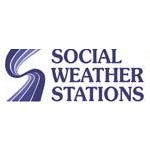
Ninety-two percent of Filipinos said they welcomed the New Year with hope rather than with fear, according to the latest Social Weather Stations (SWS) survey.
The results of the survey, conducted from Dec. 8 to 11, showed that the figure of hopeful Filipinos this year was slightly lower than the previous two years (93 percent in 2010 and 95 percent in 2011).
Compared to 2011 figures, hope for the New Year hardly changed in the Balance of Luzon (from 95 percent to 96 percent) but declined sharply in Mindanao (from 94 percent to 85 percent).
Hope also fell in Metro Manila (from 96 percent to 93 percent) and the Visayas (from 96 percent to 93 percent).
Among socioeconomic classes, the “middle-to-upper” classes ABC (100 percent) said they were hopeful about 2013.
Hope in the New Year declined slightly among the “very poor” class E (from 93 percent to 89 percent) and the masa class D (from 96 percent to 93 percent).
Since it began polling “hope and fear about the New Year” in 2000, “hope with the coming year has customarily been at high levels,” the SWS said.
It was 87 percent in 2000 and 88 percent in 2001, prior to the record 95 percent in 2002. The number declined to 90 percent in 2003 and 81 percent in 2004.
It increased to 85 percent in 2005, 91 percent in both 2006 and 2007, and 92 percent in 2008. The figure dropped again to 89 percent in 2009 and then rose to 93 percent in 2010. It reached a record high of 95 percent again last year.
The SWS survey also found that New Year hope was higher among those who expected a happy Christmas in 2012 than among those who expected a sad Christmas.
Of the 64 percent who were looking at a happy 2012 Christmas, 95 percent said they would face 2013 with hope.
Of the 9 percent who were looking forward to a sad Christmas, only 78 percent said that they would face the New Year with hope.
The survey on hope versus fear about the New Year is patterned after annual polls conducted by the Allensbach Institute of Demoskopy, a pioneering opinion research center in Germany.
The SWS, an independent research organization, used face-to-face interviews with 1,200 respondents nationwide for the noncommissioned survey and had an error margin of plus-or-minus 3 percentage points.